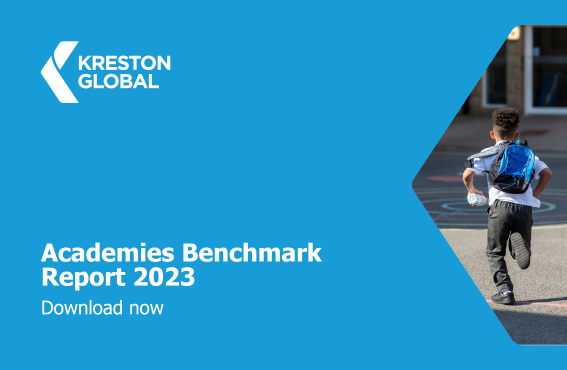The 11th annual Kreston Global Academies Benchmark Report highlights growing nervousness in academy trusts about what the future holds for the sector’s finances.
Although significant surpluses have been reported for the year to 31 August 2022; per pupil income increased by just 1% in that year against a backdrop of inflation rates of more than 10%, increased energy costs and teacher pay hikes. As a result, 88% of trusts expect future reductions in surpluses and reserves.
While the sector has seen average in-year financial surpluses once again, these are lower than the previous record-breaking year. The exception is single academy trusts (SATs) in the primary sector which reported an average in-year deficit, showing that they are under particular financial pressure.
Primary SATs in-year deficits
This is the first time in four years that, on average, in-year deficits have been seen in primary SATs. The extent of this is exacerbated by a small number in the sample with very large deficits due to capital and maintenance expenditure. However, there is a clear pattern of concern in primary SATs because 47% of them showed an in-year deficit for 2021/22. This compares with 25% of secondary SATs and small / medium multi-academy trusts (MATs).
Larger trusts with more than 7,500 pupils have achieved surpluses in 2021/22 that are broadly in line with the strong financial performance of 2021, when the average in-year financial surplus doubled to £1.7m. This is likely to be due to the benefits of economies of scale and spreading of risk in larger organisations.
The consequence of in-year surpluses in MATs is that their reserves have risen to an average of £3.1m. To some extent, these will be utilised in 2022/23 and subsequent years to finance inflationary cost increases including unfunded pay rises. Many MATs also have plans to invest some of their reserves in school improvement projects or improvements to their estate. However, trusts need to keep an eye on their reserves policy because the Education & Skills Funding Agency (ESFA) has indicated that reserves above 20% of income could be subject to scrutiny and the report highlights that 11% of MATs are carrying reserves equal to or above this threshold.
More detailed figures from other areas of the report include:
Revenue cost increases
Energy costs on a per pupil basis increased by an average of 26% in 2021/22. Some trusts were still in fixed rate supply during that year and so further increases can be expected in 2022/23 as the agreements end.
Average teacher salaries in secondary SATs increased by 14% in 2021/22 and by 8% in primary SATs and MATs. This is after several years of relatively little average growth and indicates future pressure on budgets.
The average total staff costs per pupil increased for all trusts in 2021/22. Furthermore, many trusts submitted their three-year budget forecasts in July 2022, prior to the DfE announcement on teachers’ pay. Adjustments to the budgets may therefore be required to reflect this and the £2.3 billion in government funding announced in the Autumn Statement.
Some schools have seen food prices increase by 20% in the last year, which completely outstripped funding for free school meals in two-thirds of trusts.
Falling pupil numbers
The Office of National Statistics has reported that numbers attending primary and nursery schools peaked in 2019 and are predicted to fall by at least 12% in the next six years. The challenge of falling pupil numbers is therefore likely to be acute for primary schools in the years ahead.
Growth and expansion forecasts
Seventy per cent of MATs said they expected to grow in 2022/23, with 92% forecasting growth by the end of 2023/24. Over 5% of trusts expected to grow by 7+ schools in 2023 and also 7+ schools in 2024.
There has been a slowdown in the number of schools moving between trusts. 176 academies (1.8% of open academies) moved trust in 2021/22 and only 23% attracted grant funding, a massive decrease from the peak of 63% back in 2014/15. The actual level of funding was £1.73m, substantially down on the £3.16m in 2020/21.
Download the full Kreston Academies Benchmark Report. If you have any questions about any of this, get in touch with our specialist Academies team.
This material is for informational purposes only and should not be relied upon as professional advice.



